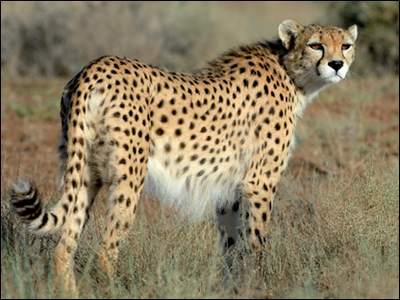Systematic prioritization of livestock grazing rights buyout in the last viable population of Asiatic cheetah (Acinonyx jubatus venaticus) in Iran
Michaela Daberger
The toxic combination of anthropogenic pressure and a high extinction risk of large mammals has led to small and isolated populations. With an estimation of less than 50 individuals, the Asiatic cheetah is a critically endangered species. Today, the Touran and Miandasth protected areas in Northern Iran host the last viable population worldwide. Livestock husbandry there causes direct and indirect threats to the species, with herders and their dogs considered as the most serious direct threat. My study aims to showcase opportunities on how and where to reduce livestock husbandry and thus mortality of the last viable Asiatic cheetah population in Northern Iran at Touran Biosphere Reserve and Miandasht Wildlife Refuge. To achieve this, I made use of species distribution modeling (SDM) with 56 Asiatic cheetah occurrence points and six predictor variables to identify suitable habitat. Subsequently, I applied the action planning approach within spatial conservation prioritization and used the habitat suitability model together with self-calculated pasture buyout costs to systematically identify priority pastures to remove through grazing rights buyouts. The habitat model (AUC: 0.9) showed large contiguous areas of suitable habitat in both protected areas, largely where livestock is ubiquitous. Roughness and distance to small rivers represented the most important predictors. For two scenarios, the prioritization identified the most important buyout pastures, that proved to be economically feasible and beneficial for the Asiatic cheetah. The identified pastures suggested for buyout had a high percentage of suitable habitat at 80% and 89% and a high degree of irreplaceability. Although the habitat model leaves room for refinement, it is consistent with coarser models and has been confirmed by a local conservationist. My study highlighted the importance of spatially explicit prioritization to identify opportunities to reduce increasing pressure on large carnivores that often come into conflict with humans. For the Asiatic cheetah, my results demonstrate the relevance of grazing rights buyout as a conservation action and provide concrete evidence on where the implementation should be prioritized to minimize mortality of the northern subpopulation.

